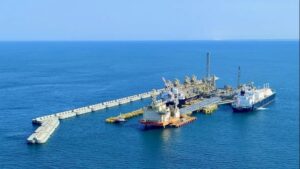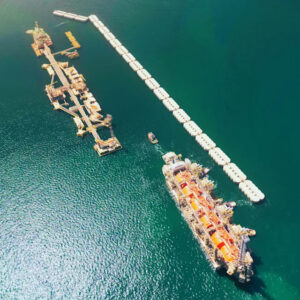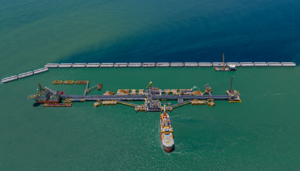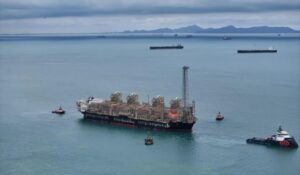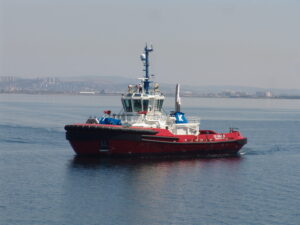BP hits new milestone at biggest gas project in its portfolio with FPSO arrival
UK-headquartered energy giant BP has welcomed the arrival of a floating, production, storage, and offloading (FPSO) vessel, said to be a key piece of the largest project in its portfolio, which came from China to its final destination off the coasts of Mauritania and Senegal, where first gas is slated to flow in the third quarter of 2024.
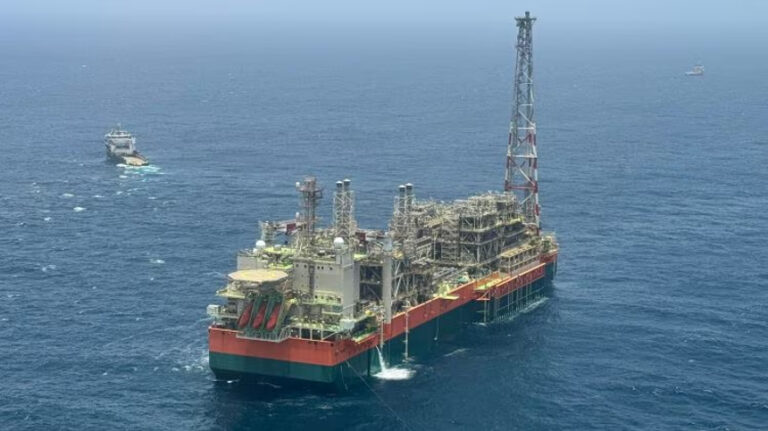
The arrival of the FPSO enables BP to move closer to the first gas from the Greater Tortue Ahmeyim (GTA) Phase 1 liquefied natural gas (LNG) development project, which envisions the production of gas from an ultra-deepwater subsea system and the mid-water FPSO Tortue that will process the gas, removing heavier hydrocarbon components.
The gas will then be transferred to Golar LNG’s floating LNG (FLNG) Gimi, which came to the maritime border of Mauritania and Senegal in the first quarter of 2024. The FPSO Tortue started its journey to the GTA project on January 20, 2023, from Qidong, China, after completing a series of sea trials following construction at Cosco Shipping Heavy Industry over three and half years.
The vessel underwent inspection and repair of the fairleads at Tenerife Shipyards in the Canary Islands before it made its way to the project site, traveling more than 12,000 nautical miles to reach its destination. According to BP, the FPSO is currently being moored at the site 40 km offshore in a water depth of 120 m. The UK oil major is the operator of the GTA project on behalf of its partners, including Kosmos Energy, Petrosen, and SMH.
Dave Campbell, BP’s Senior Vice President in Mauritania and Senegal, commented: “BP is investing in today’s energy system – and tomorrow’s too, and GTA Phase 1 represents this investment in action. And this is a huge landmark step for the project, an innovative LNG development that is leading the way in unlocking gas resources for Mauritania and Senegal.
“The FPSO vessel has travelled halfway around the globe and its safe arrival and installation is testament to the resilience, skills, teamwork and huge effort of all the partners involved. We are now entirely focused on safe completion of the project as we continue to work towards first gas.”
Related Article
-
FLNG’s arrival marks ‘major’ step toward first gas from BP’s giant project
Business Developments & Projects
The GTA Phase 1 development, which is perceived to be the first gas development in this new basin offshore Mauritania and Senegal, is expected to produce around 2.3 million tonnes of LNG annually for more than 20 years.
With wells in water depths of up to 2,850 m, the project is said to have the deepest subsea infrastructure in Africa and has been granted the status of national project of strategic importance by presidents of both Mauritania and Senegal.
The FPSO, which is expected to process over 500 million standard cubic feet of gas per day, will remove water, condensate, and impurities from the gas before transferring it via pipeline to the FLNG vessel at the Hub Terminal approximately 10 km offshore.
Afterward, the gas will be cryogenically cooled, liquefied, and stored at the FLNG Gimi before being transferred to LNG carriers for export with some of it allocated to help meet growing demand in the two host countries.
With an area equivalent to two football fields and ten stories in height, the GTA project’s FPSO is made of more than 81,000 tonnes of steel, 37,000 m of pipe spools, and 1.52 million meters of cable and will have up to 140 people on board during normal operation.
BP has also been busy with other projects in its global portfolio. The firm recently started oil production from its new platform in the Caspian Sea and won a two-year license for a gas field in the Caribbean, which straddles the maritime boundary between Venezuela and Trinidad and Tobago.

